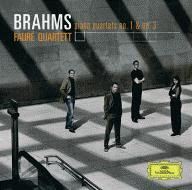Thomas Hampson Displays Incomparable Range of Musical Passions, Talents and Interests as First Artist-in-Residence of New York Philharmonic
“We wanted a distinguished musician who is amenable to performing chamber music and teaching; a scholar and music advocate beloved by New York audiences. Tom fits that bill.” – Alan Gilbert
Enjoying a season already rich in far-reaching endeavors, including his celebrated “Song of America” project, the singular American baritone Thomas Hampson embarks on another great adventure in November when he begins his year-long appointment as the first Mary and James G. Wallach Artist-in-Residence of the New York Philharmonic. Throughout the season (Alan Gilbert’s first as the orchestra’s new Music Director), Hampson will take part in a wide range of activities – 16 events in all – that showcase his wide-ranging talents as performer, music enthusiast, and scholar. In concerts and a solo recital he will explore a broad range of repertoire, from Zemlinsky’s Lyric Symphony (Nov 5, 6, 7 and 10) to John Adams’s The Wound-Dresser, which Hampson will perform both in New York (Jan 14-16) and on tour with Alan Gilbert during the conductor’s first European tour with the Philharmonic (Jan 22 – Feb 3). Hampson will give a recital, co-presented by the orchestra and Lincoln Center’s “Art of the Song” series, in Alice Tully Hall on April 11, and he will join members of the orchestra in the inaugural season of its “Contact” new music series (April 16, 17), performing a new work written for him by Mattias Pintscher. Hampson, who was recently named the orchestra’s Leonard Bernstein Scholar, will give master classes at the Juilliard School and three Philharmonic-presented lectures – all sharing an overarching concept title "Listening to Thought”. The lectures begin on November 2 with “Vienna’s Paradigm Shift,” the first of two talks in the orchestra’s “Insights Series”, and continue when Hampson gives the annual Erich Leinsdorf Lecture, “Awakening of the American Voice”, on January 11.
The sheer variety and scope of Hampson’s activities this season with the New York Philharmonic present both a daunting challenge and a unique thrill for a singer whose reputation is founded on both prodigious artistic achievement – from definitive performances and recordings of American and German song to triumphs on the opera stage in French, German, Russian and Italian repertoire – and insatiable curiosity. Hampson is particularly gratified to have such a remarkable opportunity to explore and share so many of his musical passions at such a historic time for the orchestra, when a new music director is bringing, in Hampson’s own words, “the excitement of his youth, abilities, New York-ness and American-ness to one of world’s most important ensembles.” Hampson sees it as a wonderful two-way relationship, providing the organization and its music director with a partner seeking a vital artistic dialogue, while it provides him an invaluable opportunity to perform, educate, enlighten and entertain audiences in areas of enduring musical importance to him.
For his first appearances with the New York Philharmonic Hampson will be singing Zemlinsky’s seldom-performed and opulently-scored Lyric Symphony under guest conductor Neeme Järvi, beginning on November 5. Hampson’s research into the music and arts in Vienna at the turn of the 20th century is reflected not only in his choice of repertoire, but also in his ability to speak eloquently on his subjects of choice. The first of his lectures in the orchestra’s “Insights Series”, entitled “Listening to Thought: Vienna’s Paradigm Shift”, takes place on Monday, November 2 at Lincoln Center’s Stanley H. Kaplan Penthouse. Hampson will explore the interplay of verbal and musical languages in vocal music, focusing on experimentation and change in Vienna between the wars.
American music comes to the fore beginning on New Year’s Eve, when Hampson joins Alan Gilbert and the orchestra for performances of selections from favorite Broadway shows as well as Aaron Copland’s beloved Old American Songs. Soon after, Hampson will perform John Adams’s hauntingly beautiful, Whitman-inspired The Wound-Dresser with Gilbert and the Philharmonic both in New York (Jan 14-16) and abroad; Hampson will join Gilbert for his first European tour as music director of the orchestra. As a prelude to these performances, Hampson will give the annual Erich Leinsdorf Lecture: “Listening to Thought: Awakening of the American Voice.” This talk, which takes place in the Walter Reade Theater on January 11, will emphasize Whitman’s writings and influences on his own and later generations of authors, poets, and composers.
In April, Hampson will be doing double – if not triple – duty in New York City, reprising the role of Germont in the Metropolitan Opera’s production of Verdi’s La traviata (March 29 – April 24) while he continues his residency activities with the Philharmonic. His third and final lecture of the season, “Listening to Thought: A Guide to German Romanticism”, will take place on Monday, April 5 at the Kaplan Penthouse and will explore the iconography, metaphor, and imagery of this epochal period for European art song. That lecture will set the stage for Hampson’s solo recital at Alice Tully Hall on April 11, which will be co-presented by the New York Philharmonic and Lincoln Center’s “Art of the Song” series.
Thomas Hampson’s season with the Philharmonic ends with the new in several ways. As part of the New York Philharmonic’s new “Contact” series, which will feature programs of new music commissioned by the orchestra, Hampson will give the world premiere of a work written for him by German composer Matthias Pintscher. The work, co-commissioned by the New York Philharmonic and the Frankfurt Radio Symphony Orchestra, features Hebrew-language settings from the biblical Song of Solomon and contemporary lyric poetry (love poems by Yehuda Amichai, the Jewish poet who died in 2000). Hampson, Gilbert and members of the orchestra will perform the work on both sides of upper Manhattan: on Friday, April 16 at Symphony Space, and on Saturday, April 17 at the Metropolitan Museum of Art.

Comments